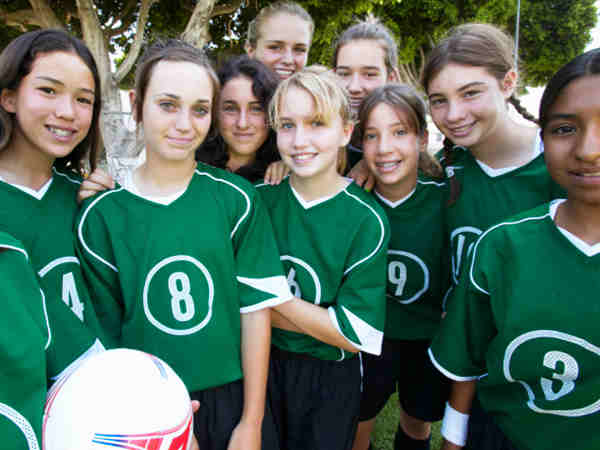
Preventing Relative Energy Deficiency in Young Fem
Monique Ryan, MS, RD, CSSD, LDN
Published January 03, 2017
It can start innocently enough. A young female athlete pushes herself harder than usual, training intensely to gain a competitive edge. While this increased output naturally requires consuming more calories to meet the total demands of training and recovery — not to mention growth and development — her diet does not change. The result is a condition known as "relative energy deficiency in sport," or RED-S.
Coined by an expert panel convened by the International Olympic Committee, RED-S is a more comprehensive term that builds on the condition known as the "female athlete triad" to describe an energy deficiency gap that results when energy intake is insufficient to support activities of daily living, growth, health and functioning. This syndrome affects bone health, menstrual function, metabolic rate, immune system function, protein synthesis, cardiovascular health and psychological health. While more common in females, RED-S also affects young male athletes.
RED-S can develop when there is pressure to change eating habits, especially in sports with an emphasis on appearance, low body weight and endurance. Young girls also are exposed to dieting and other nutrition messages perceived as "healthy" that often are inappropriately applied to those who are growing, developing and training. A desire to "eat healthy" or lose weight in hopes of improving athletic performance can increase susceptibility to willful food restriction and rigid dieting.
Girls simply may not understand how their energy needs translate into daily food choices. An eating disorder does not have to precede the development of RED-S, though some level of psychological factors can be present before, as well as after the syndrome develops. Regardless of the starting point, serious short-term and long-term health consequences can occur in young female athletes who develop RED-S.
The Effects of RED-S
First, bone health is a major concern as girls build 60 to 80 percent of their lifetime bone mass by age 18. When preteen and teenage girls restrict their eating, body systems important to bone growth may shut down. Restricted diets also can be low in calcium and vitamin D, which contributes to poor bone formation. If RED-S continues without being addressed, poor bone growth can lead to stress fractures and even early osteoporosis, in which bones become fragile and more likely to break.
Another concern is reproductive development. Important markers of insufficient energy and resulting low estrogen levels are delayed menstruation and irregular or missed cycles.
Other potential effects of RED-S include increased risk of injury and decreased endurance and muscle strength. And, it can reduce response to training, decrease coordination, impair judgment and increase irritability and depression — results that no athlete wants to have happen. The good news is correcting RED-S does not mean a sacrifice in athletic performance. In fact, it should result in an improvement in athletic performance.
Parents can play a significant role in preventing RED-S. First, educate your daughters on the energy demands of their training and the interconnected relationship of proper nutrition, bone health and menstruation, as well as risk of injury and impaired training from insufficient consumption. Second, keep an eye out for weight loss, changes in menstruation and changes in mood.
Finally, create a supportive environment in which girls can consume three meals and one to three snacks per day. Even missing one meal on a regular basis can result in an energy deficit. Make sure your daughter has a regular breakfast and packs or eats a full lunch at school. Many girls train after school, and an easily digested snack prior to practice can provide energy for training. Good snack choices include an energy bar, cereal, crackers, banana, fruit and fruit juice, pretzels, and peanut butter and jelly sandwiches.